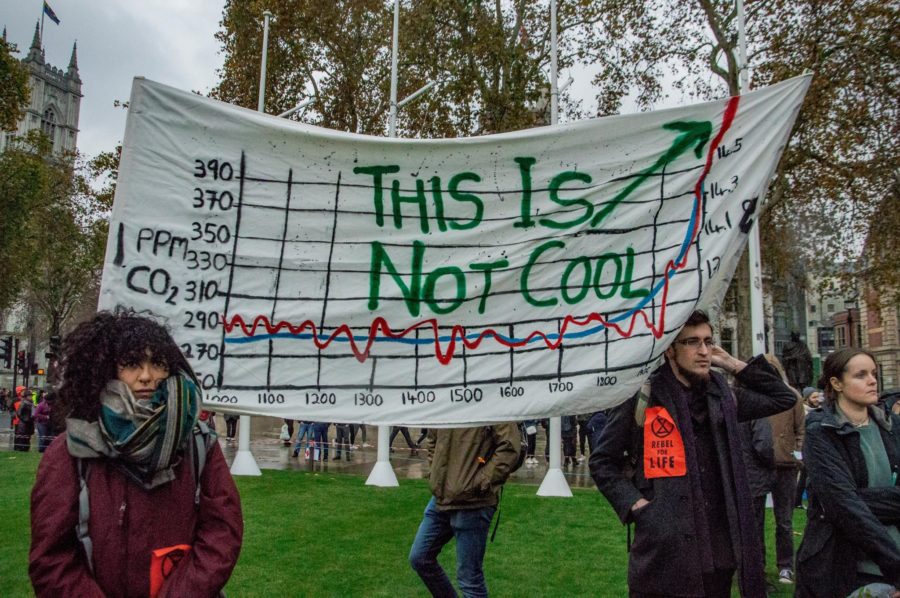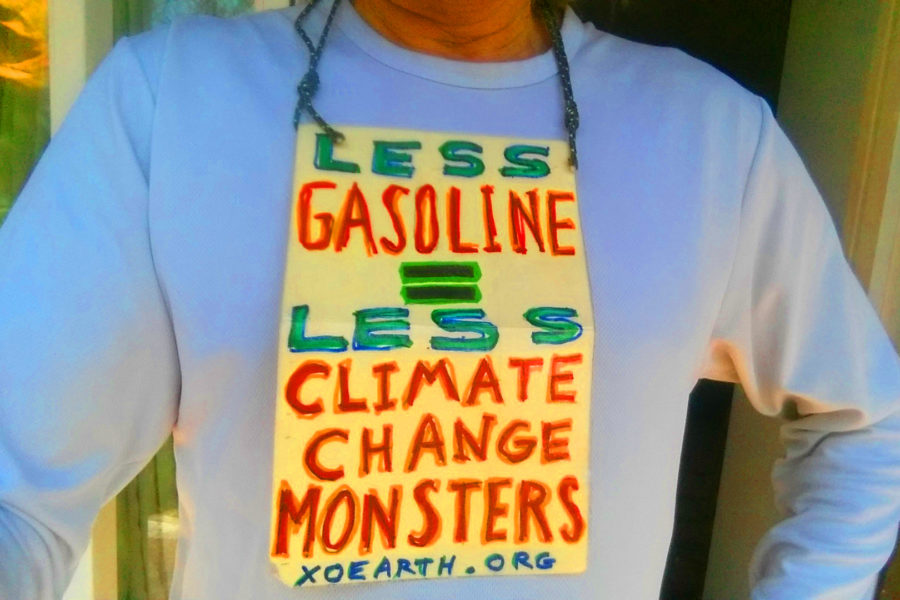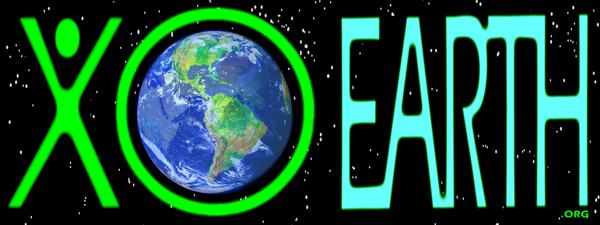
You get to decide if 75,000 square meters [18.5 acres/ 18.5 football fields/ 7.5 hectares] of habitat potential thrives or dies every year! [1]
The career you choose, your consumer choices, the organizations that you volunteer with and donate to, and the climate actions that you take will decide the fate of your 75,000 square meters.
Some of those 75,000* square meters are close to where you live. You might walk and play on some of your 75,000 square meters every day!
In fact, some of your 75,000 square meters might be some of your favorite places to go to explore, exercise, play, hang out, or think through some things, or even think deep-thoughts!
If you take actions to help your nearby square meters thrive and stay alive, those square meters will stay clean and healthy, and will help keep the air, water, and soil healthy in your community.
The rest of your 75,000 square meters that are not close to you is spread out around the world. Some of your 75,000 square meters are in the most beautiful and crucial ecosystems that exist.
In total, you get to decide the fate of 75,000 square meters [18.5 acres/ 18.5 football fields/ 7.5 hectares] that are spread all around the world every year – both close by and far away.
So every day when you are taking actions to save this sweet planet, visualize saving one or more of your 75,000 square meters that are somewhere in your area and around the world.
The quality of life, health and survival of the animals, plants and people on your 75,000 square meters is determined by ::
+ How much you team up with others to fight climate change — such as an environmental organization or climate team that you work with or get together.
+ Your career, lifestyle and consumer choices.
+ How much you take civil disobedience actions — either solo or other climate crisis activists.
+ How much you donate to climate crisis teams and environmental organizations.
You get to decide how much of your 7.5 hectares of land and sea natural habitat around the world is protected from or destroyed by human development, or gets to turn back into natural habitat.
So when you take climate actions or make choices that don’t hurt our dying planet, acknowledge yourself for making things better for the habitat and the precious people and lifeforms that are scattered all over this planet Earth on the 75,000 square meters that you are responsible for.
After all, if the people, creatures, and plants on your 75,000 square meters knew who you are, they would certainly want to thank you for the climate and environmental actions that you take so they can survive and thrive.
Have fun remembering that everywhere you look, you will be seeing little parts of nature that you have helped save if you have been taking big climate change actions. And although you may not be able to identify the specific square meters that you save, know that your environmental actions matter immensely to the species and people — including yourself and your friends — that live on some of those 7.5 hectares [18.5 acres]!
[1] 75,000 square meters is an estimate for the average American that comes from the Global Footprint Network. Read about the Global Footprint Network’s estimate below and on their website. If you live somewhere else in the world, to estimate your country’s average per person square meters multiply 75,000 by your country’s ‘purchasing power parity’ [PPP /Purchasing power parity]
75,000 square meters = 18.5 acres = 18.5 football fields = 7.5 square hectares
Fun Ways You Can Protect Your 75,000 Square Meters of Habitat
1] Let’s say that you have the skills and option to accept a job that pays more. However, you have decided to get a different job because it is directly benefiting and cooling our biosphere, then you can use the income level that you would have made at the job that does not help the biosphere in your My Square Meters calculation.
2] Let’s say that you donate some of your income to organizations or projects that are helping cool our heated Earth. Those donations reduce your net income. In this case, you can use your full income level to do the My Square Meters calculation.
3] Let’s say that you choose to volunteer some of your time to organizations or projects that are helping cool our heated Earth. Plus, you know that you could have been working those hours at a job you are qualified for and have the option to be employed in. Then you can use your full potential income level to do the My Square Meters calculation.
4] Let’s say that you have the skills and option to accept a job that pays more. However, you have decided to get a different job because it is less damaging to our biosphere. In this case, you can use an income level that is somewhere in between those two income levels. For now we don’t have quick formula for determining that approximate income level for your My Square Meters calculation. So go ahead and estimate that income level on your own for your My Square Meters calculation.
Basis for 75,000,000 Estimate, and Future Adjustments
The 75,000 square meters estimate comes from Global Footprint Network.
Global Footprint Network team organization includes some of the original “footprint” scientists, i.e., Wackernagel et al. The estimate is for the average American’s ecological current footprint per person. The area is the amount of Earth-average productive land that is taken to be used by that person. [See data.footprintnetwork.org/#/]
Stele also did an estimation for land only and got 6.8 hectares.
Here is the messy calculation notes so far:
510*10^6 km^2 area Earth * 66% productive earth’s land area [not deserts] * 30% human appropriated net primary production [HANPP]
= 111,100,000 area of HANPP
[This is only the HANPP of the land, and not ocean. Stele would like to add his ocean appropriation estimate sometime.]
111,100,000 km^2 area of HANPP / 8*10^9 people on earth = .014 average km^2 area of HANPP per world capita
$59,000 average us net income per capita / $12,200 average global net income per capita = 4.84 ratio of average us net income compared to global average to global per capita net inc
.014 average km^2 area of HANPP per capita * 4.84 ratio of average us net income vs global average per capita net inc = .068 km^2 average area u.s. per capita of human appropriated net primary production [.026 square mile] [16.8 square acres] [6.8 hectares] [15.2 u.s. football fields] [81,387 square yards]
Total primary productivity in the oceans [48.5 Gt C/y net primary production (NPP)] is similar to that on land (56.4 Gt C/y NPP), even though the oceans have more than twice as much surface area (2).
Human Appropriation of Net Primary Productivity (HANPP) is the proportion of terrestrial NPP consumed directly and indirectly through human land use. It does not include human appropriation of the oceans.
One square yard is the same as 0.836127 square meters. To calculate sq yards to sq meters, divide your square yards’ value by 1.196. The oceans area 71% + land area 29% = the Earth’s total area.
The loss of habitat potential doesn’t necessarily mean that the land itself is destroyed, but it is taken from nature and is appropriated and utilized for human purposes. In rare cases, the human appropriated area may still contain the full carbon sink that the original habitat held. But in most cases, the carbon in the human appropriated habitat will lose a lot or all of it’s carbon storage potential.
Here are some related sources:
The annual net primary productivity of the entire biosphere is around 170 billion tonnes of the dry weight of organic matter. The annual net primary productivity of the oceans is around 55 billion tonnes and that of land is around 115 billion tonnes.Jul 3, 2022
The scale of life and its lessons for humanity
Total primary productivity in the oceans [48.5 Gt C/y net primary production (NPP)] is similar to that on land (56.4 Gt C/y NPP), even though the oceans have more than twice as much surface area (2). However, despite similar total primary productivity, Bar-On et al. (1) estimate that there is roughly 80 times more biomass on land than in the oceans. Terrestrial plants—which comprise ~80% of the total biomass on Earth—make up most of this difference. In striking contrast to the land’s dominance of producer biomass, Bar-On et al. (1) estimate that more than 70% of global animal biomass is found in the ocean. Earth has a plant-dominated landscape and an animal-dominated seascape. What could explain these fundamental differences?
https://www.ncbi.nlm.nih.gov/pmc/articles/PMC6016823/
“We found an aggregate global HANPP value of 15.6 Pg C/yr or 23.8% of potential net primary productivity, of which 53% was contributed by harvest, 40% by land-use-induced productivity changes, and 7% by human-induced fires.”
https://www.pnas.org/doi/10.1073/pnas.0704243104#:~:text=We%20found%20an%20aggregate%20global,%25%20by%20human%2Dinduced%20fires.
“Humans annually absorb 42 percent of the Earth’s terrestrial net primary productivity, 30 percent of its marine net primary productivity, and 50 percent of its fresh water [3].
Forty percent of the planet’s land is devoted to human food production, up from 7 percent in 1700 [3].
Fifty percent of the planet’s land mass has been transformed for human use [3].”
https://www.biologicaldiversity.org/programs/population_and_sustainability/extinction/#:~:text=Humans%20annually%20absorb%2042%20percent,percent%20in%201700%20%5B3%5D.
https://www.pnas.org/doi/10.1073/pnas.0704243104#:~:text=We%20found%20an%20aggregate%20global,%25%20by%20human%2Dinduced%20fires.

Purchasing power parity
The environmental impact of the kinds of goods and services sold in a developed country with a higher PPP may have a greater per dollar negative impact on the environment and our planet’s climate than in countries with a lower PPP. The reason for this possibility is that a greater percentage of each dollar is spent on higher greenhouse gas emission based products and the burning of fossil fuels.
In other words, the impact of the total average purchases by the average US citizen is probably even more impactful that the 1.5 square kilometer suggests.
However, this variable has not yet been examined or quantified, so as yet, the My 1.5 Square Kilometer has not been adjusted for purchasing power parity (PPP) ~Stele
Wikipedia / Purchasing power parity / Range and quality of goods



Leave a Reply
You must be logged in to post a comment.